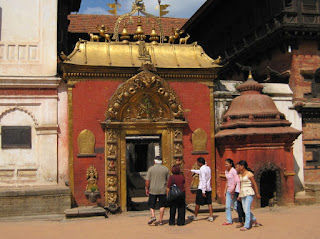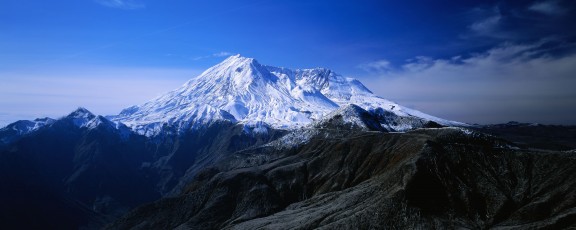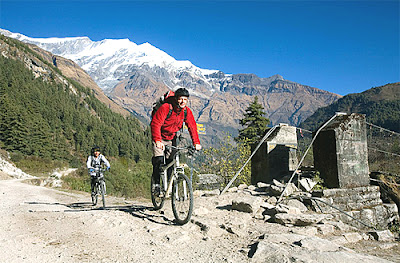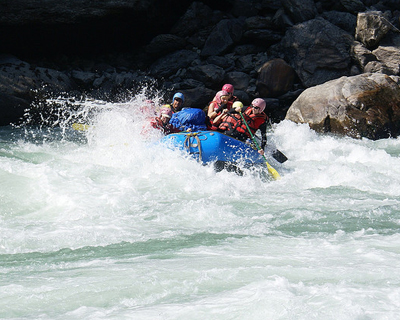Welcome to Nepal
Namaste and Welcome to Nepal, for many visitors, this Himalayan country brings images of snow-capped mountains and green hills. In fact, ten highest mountains in the world, eight are in Nepal, Nepal mountaineering...
Wednesday, November 30, 2011
Wednesday, August 24, 2011
Natural Beauty of Nepal
Elephas maximus indicus, in Chitwan National Park, Nepal (Photo credit: Wikipedia)
Asian Elephant (Elephas maximus) Royal Chitwan National Park, Chitwan, Nepal. (Photo credit: Wikipedia)
Natural Beauty of Nepal Slideshow: Ramnath’s trip from Royal Chitwan National Park, Nepal to 4 cities Kathmandu, Pokhara, Bhaktapur and Chitwan (near Gorkha) was created by TripAdvisor. See another Nepal slideshow. Create your own stunning...
Wednesday, August 10, 2011
Rara Lake-The Largest Lake of Nepal

Rara Lake
Rara Lake Trekking offers the best scenery in the north-western part of Nepal. Within its boundaries are the Rara National Park, the smallest park in Nepal, where in turn the country's largest lake, Lake Rara can be found (10.8 square kilometers. At 2990 meters). Considered one of the best parks in the world, Rara National Park abounds in coniferous forests and is the ideal habitat for musk deer, Himalayan black bear and other...
Thursday, July 28, 2011
Phewa Lake

Phewa Lake
The Fewa (or Phewa) the lake is a must for those among the tourist attractions in Pokhara. This beautiful lake is very captivating charm on the outskirts of Pokhara, Kaski district. Pokhara is a city in central Nepal, located approximately 198 km west of Kathmandu. One of the most popular tourist destinations of Nepal, Pokhara is situated in the northwest corner of the Pokhara valley, which is an extension of Seti Gandaki...
Wednesday, July 27, 2011
Sagarmatha National Park

Mt. Everest (Nepal) 8848 Meter World Highest Mountain Peak
Map of Sagarmatha National Park
Sagarmatha National Park located in the Himalayan foothills has occupied an area of 1,148 square kilometers. It offers the best views of rugged mountains, glaciers, valleys and rivers. The park houses an incredible variety of species of plants, birds and exotic animals. Plant species like blue pine, fir, rhododendrons,...
Chitwan National Park

Map of Royal Chitwan National Park
Royal Chitwan National Park is spread across an area of 932 square kilometers and is located within the belt of Terai of Chitwan. The park offers a worthwhile excursion through Safari. With nature at its best you will find the rarest species in the ecosystem. Canoeing on the lake in the park will have to encounter with crocodiles and fun adventure. During your stay in one of the park, you are guided...
Changunarayan

Main Door
Temple of Changunarayan
Two levels Changunarayan temple is located 15 kilometers from Kathmandu city. Since this is the temple of Lord Vishnu, also called Narayan and Changu is near the temple has been named. Stone inscription of 464 AD and other architectural masterpiece in the history window appears ancient temple of Nepal. The temple also bores the sculptures of the ten incarnations of Vishnu; Vishwaroop, Vishnu Vikrant,...
World Heritage of Nepal Pashupatinath

Pashupatinath Backside
As its name indicates, Pashupatinath temple is a temple of Lord Shiva and is the holiest site for Hindus. The sacred temple is on the banks of sacred Bagmati River 5 km east of Kathmandu city. The Hindus are prohibited from entering the temple. It has two levels of roof and four silver doors. Devotees from all over the world come here to pay homage to the god Shiva.
Pashupatinath Back side in at night
Pashupatinath...
Swayambhunath

It is 3 km away from the west of Kathmandu. Old story goes back thousands of years Swayambhunath was an island. Later, a stupa was built. Manadeva King contributed to the preparation of the stupa at 460. After the Mughal invasion, which was distorted and had to undergo renovation in the 14th century. King Pratap Malla in the 17th century architecture even more and also added a ladder to reach the stupa. At present, the stupa is a solid...
Bhaktapur Durbar Square

Golden Gate of Bhaktapur
Durbar Square
Temple of Batsala Devi
Bhaktapur is in the eastern part of Kathmandu Valley. Also known as Bhadgaon or Khwopa, Bhaktapur is regarded as the abode of ancient Nepali culture, custom artwork and sexy excellent craftsmanship. Each monument represents medieval culture, religion and customs of Nepal. Newari population has dominated much of Bhaktapur. Bhaktapur is the only place in Nepal that...
Patan Durbar Square

Patan Durbar Square
Connected to 5 kilometers south-east of Kathmandu Valley by Bagmati River, 459 hectares of Patan is bounded by four stupas built by Emperor Ashoka in the third century in recorded history. Patan is also called Lalitpur. There are several legends attached to the origin of the term, Lalitpur. Legend has it that in ancient times as Kathmandu was involved in a severe drought and three people were assigned to call...
Kathmandu Durbar Square

In Kathmandu, Kathmandu Durbar Square has Hanuman Dhoka, Temple Degutale, Taleju Mandir, Chowk nose, nine-story tower Basantapur, Panch Mukhi Hanuman Temple, Mul Chowk, Mohan Chowk, Sundari Chowk, Tribhuvan Museum, King Mahendra Memorial Museum and Kal Bhairab temple nearby. Hindu mythology that if a person interprets 17th century stone inscription written in 15 different languages on the walls of the palace of Hanuman Dhoka, there...
Sunday, June 12, 2011
Kathmandu

Swayambhu, Dharahara, Pashupati
Kathmandu, Basantapur
Kathmandu with its distinctive architectural heritage, palaces, temples and courtyards has impressed several writers, artists, and poets, each foreign and Nepalese, and , the capital town of Nepal, is one in all the oldest cities of the globe set admits within the lovely valley of Himalaya and loved by people who appreciate the character at its best. it's the hub of Nepal's...
Thursday, June 9, 2011
Pokhara
Paragalaiding-Pokhara
Pokhara is one among the foremost fashionable tourist destinations in Nepal, and is additionally a contemporary town additionally to its history and nature. it's various museums and there are some fascinating caves, waterfalls and Tibetan villages within the surrounding hills. Pokhara records the higest rainfall within the country.
Fewa lake and Mt. Annapurna,
Mt. Machhapuchhre
Pokhara gets additional...
Pashupatinath

Pashupatinath Backside
Pashupatinath Back side in at night
Pashupatinath temple, with its astonishing architectural beauty, stands as a symbol of faith, religion, culture and tradition, and is of the biggest temples of Hindus in the world.
Pashupatinath covers and area of 281 hectares, which is one of the main temple multifaceted in Nepal, and nath is believed to have been regarded as one of the holiest sites for Hindus all...
Lumbini Birth Place of Buddha

Mayadevi temple
Asoka Pillar
Lumbini has a number of temples, including the Mayadevi temple, and others under construction. It remained neglected for centuries. Lumbini is situated in the southern Terai plains of Nepal and is about 300 kilometers southwest of Kathmandu. It is the birthplace of Siddhartha Gautama Buddha and therefore is considered a sacred pilgrimage site for Buddhists. In 250 BC, Emperor Ashoka built a stone...
Wednesday, June 1, 2011
World Heritage of Nepal Boudhanath

Boudha
Boudhanath symbolizes Tibetan Buddhism. It is located 8 kilometers east of Kathmandu and was built by King Man Dev Licchavis in the 5th century AD Its colossal and ancient stupa is regarded as one of the largest stupa in the world and is built on an octagonal base and inlaid with staggered niche representing Buddha and his teachings. After the Chinese invasion in 1959, Tibetans in thousands flocked to this famous Buddhist Chaitya...
Sunday, May 8, 2011
Hanuman Doka

Hanuman Dhoka
Hanuman Dhoka is the former Royal Palace of the Malla kings and sequentially of the Shah dynasty. It is several complexes connected together taking up about five acres. The eastern wing of the palace was built in the mid-16th century, and is the oldest part of the palace. It has ten courtyards. King Pratap Malla enlarged the original building in the 17th century, adding many of the temples. The oldest part of the palace...
Subscribe to:
Posts (Atom)




